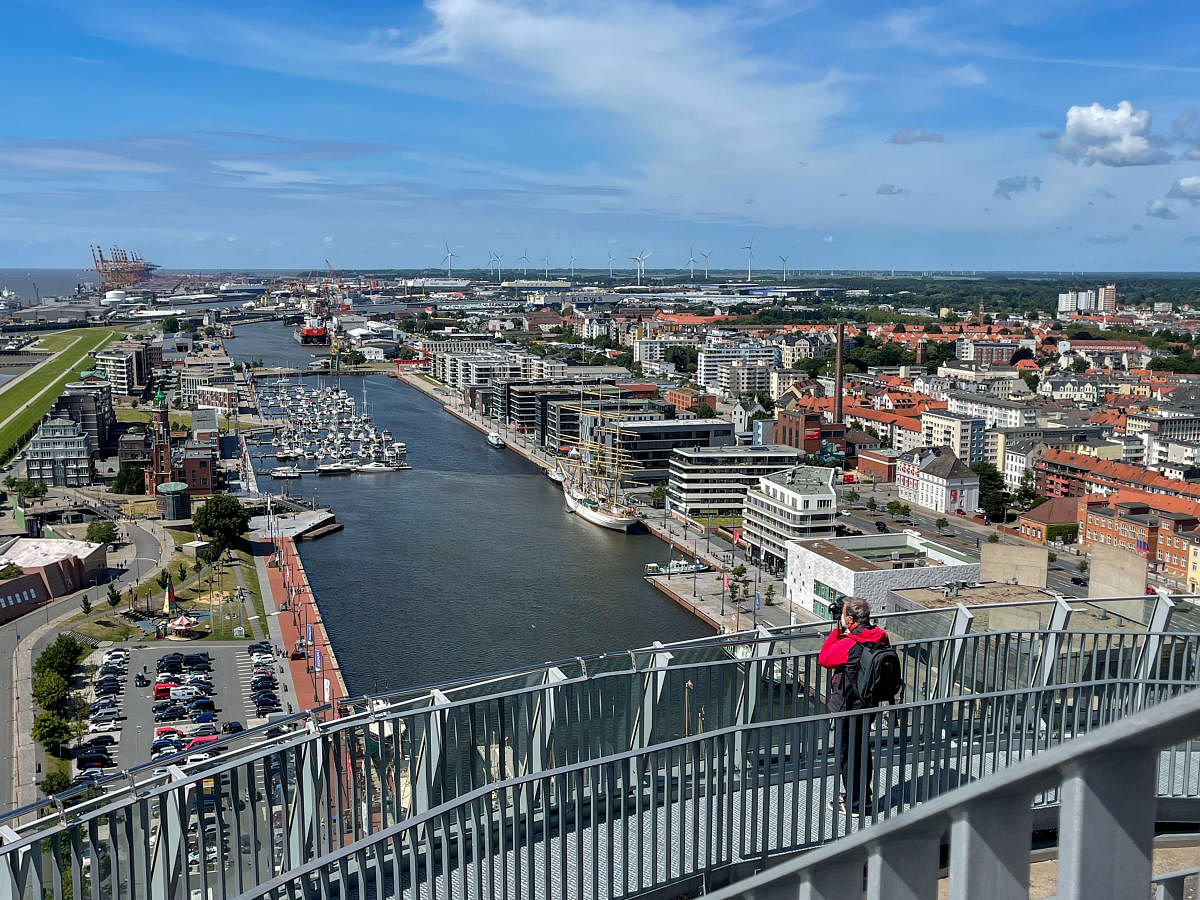

There are many things that contribute to creating a remarkable city. Iconic buildings, an abundance of green spaces, and an efficient public transportation system are among them. Sustainability and ecological protection in Germany have grown to be important markers in defining the quality of life. The Hanseatic port sister cities of Bremerhaven and Bremen warranted a visit to see how they’ve earned their stripes in attaining an eco-friendlier, more innovative way of life.
In keeping with the mandate of slower, more considerate ways of travel, I took the train from Munich to Bremerhaven. I beat through the abundance of maritime and historical attractions, a vibrant art and cultural scene and make directly for Klimahaus or climate house. The structure, which has an inventive shape resembling a cloud or a ship, adheres to its eco-friendly mandate by using electricity from renewable sources. In an effort to preserve biodiversity, the house raises endangered animal species. Around eight degrees east longitude, it offers a singular voyage across the globe, passing through temperature zones that stretch from Switzerland to Cameroon. The activities range from negotiating rope bridges in Africa to enduring the heat and sand of the desert, and the temperatures rise and fall proportionately. In the face of climate change, I register emotional insights about declining biodiversity and rising sea levels while perspiring and freezing. Examining societies that practice self-sufficiency around the globe provides inspiration and optimism.
Restaurants selling seasonal fare made with regional products are in great demand all across the city in keeping with this eco-aware mindset. A prime example is lunch at Restaurant Dock Four in the Schaufenster Fischereihafen, where scores of fishing trawlers formerly unloaded their catch. The people who serve me exquisite, fresh fish explain where it comes from. In these places, pairing organic wine and beer from nearby microbreweries with dinner is typical. Bremen, which is only a 30-minute train trip away, is no stranger to eco-friendly living practices. It’s best to tour this “city of short distances” on foot or by bicycle. The old town’s history is well preserved, and a guide shows me around. The remarkably beautiful market square is dotted with a number of now-recognised UNESCO world historic monuments that celebrate the joy of preservation. A prime example is the town hall, which was constructed between 1405 and 1410 and features a stunning Weser Renaissance façade with a statue of Knight Roland (a symbol of trade rights and freedom). A sculpture of Bremen’s Town Musicians by Gerhard Marcks is nearby and beckons. They have been touched for good luck a lot, as evidenced by the shining noses and front legs. Pop-up shops and musical performances that are blatantly local in their offerings flourish in and around the centre. In the neighbourhood, Bottcherstrasse is a 100-metre-long, distinctive street with a golden entryway and red-brick walls that is home to numerous museums and art galleries. One of Germany’s greenest cities, Bremen’s urban areas total over 2,362 hectares of green space. There are many playgrounds and grassy areas for sunbathing in Burgerpark. I stroll through the beautifully planted Wallanlagen Park in the old district, which is lush and vibrant. I come across a group of musicians and jugglers who give the area a carnival-like feel. A little distance away, in Bremen’s oldest neighbourhood, the Schnoor, tiny timber-framed homes are arranged like beads on a thread. The old-fashioned Hanseatic way of doing things is still followed here. Since the Medieval Ages, artists, craftsmen, and goldsmiths have worked in these studios.
The Schlachte promenade, which is located further away along the Wesser River, is an example of a leisurely way of life. Bars, cafés, and beer gardens are popular gathering places for locals and tourists. The vista is of ships, both new and used in new ways. Several are eateries, while others are for river excursions. As I board the vintage train Moor Express, I continue to feel at ease and unhurried. Worpswede and Bremen may be reached by car in 44 minutes. There is a bicycle carriage, which serves as a preview of the future landscape. Worpswede, once home to turf diggers, is now a community of artists. The bicycle is a convenient way to travel around and explore both the surrounding area and the artists’ community. The Devil’s Moor is just as popular as the artistic community and galleries that make the area unique. I ride a peat barge through the rivers to see this fabled landscape. My captain recalls the day when peat was a popular heating fuel among farmers. That evening, as I lay in bed in Bremen, I consider the distinctive qualities of this classic harbour city. The fact that Bremen is still receptive to outside influences and ideas may hold the key. Once a dockland, the Uberseestadt is now a dynamic neighbourhood that is distinguished by modern architecture, eateries, and galleries as well as by inclusivity, environmentally friendly and re-purposed structures, and a more thoughtful way of life. A stroll through this new neighbourhood serves as a gentle reminder that “you have a gentler impact on planet earth when you re-purpose old structures, support traditional crafts alongside technological innovation, employ marginal communities, and leave the woods and waters as pristine as you found them.”